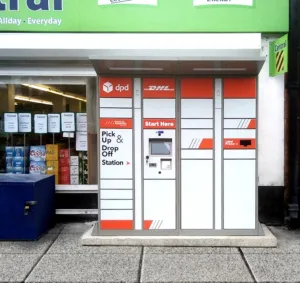By Tommy Kelly, CEO, eShopWorld
Crises like Covid cause countries and their people to look in rather than out, as you might expect as this all comes down to the health of each and everyone else. But this inward thinking can extend to all areas of life and business, with the result that opportunities available now and after the crisis can be missed.
In retail, the focus, in a daily tide of bad news, has been on the prospects for the high street, and in an equal tide of good news, the growth of UK ecommerce and the opportunities afforded by Brexit once the new regulatory and compliance ecosystem has been adopted.
But this mix of news hides two important trends for any company doing business online and that is the prospects for international online sales, and the sources of these sales. Firstly, our own figures show that sales transacted through our checkout rose by 82% year-on-year (YOY) across 2020, which clearly demonstrates the extent of the trading opportunity available to globally optimised retailers and brands. In addition, this unprecedented demand set off by Covid restrictions saw sales peak at +141% YOY in July 2020.
And for those that are paying attention to the opportunities abroad, they may like to know that the sources of demand are far from the usual suspects with the Philippines (+258%), Morocco (+215%), Chile (+211%), Puerto Rico (+203%) and Egypt (+196%) the fastest growing markets for cross-border commerce in 2020.
And the point about the peak in July and other figures now emerging is that while this trend may have been accelerated by Covid, the behaviour it has prompted looks like it has already become habitual. Consumers have experimented with new brands, new channels and new methods of fulfilment and are unlikely to shift back once society becomes fully mobile again.
However, this once in a lifetime boon to ecommerce retailers has drawbacks. First of all, more retailers and brands are now competing for a total spend that has not risen; secondly, this has seen acquisition costs rise as brands spend more to compete for attention and consumers have become even more demanding in terms of price, promotions, fulfilment and returns.
These trends demand that retailers look further afield for growth, particularly as home markets threaten to become saturated.
The demand is there. According to our own research of more than 22,000 consumers across eleven countries, more than half (52%) of respondents said they had made six or more cross-border purchases in the past year.
The figures also reveal useful tactical insight for retailers that get the best returns from a cross-border investment. The top reasons cited for purchasing internationally were lower cost – including duties, taxes and shipping – (36%) and availability of products that couldn’t be found in the shopper’s own region (35%).
To take part, retailers must have a deep understanding of global markets that allows them to offer a localised, customer-centric and cost competitive shopping experience if they wish to maintain both the loyalty of existing customers and attract new ones. For those retailers and brands that have not already done so, prioritising investment into the development of a best-in-class global ecommerce offering is critical to allow them to harness fluctuating, and profitable, global consumer demand.
Brands that partner with a cross border specialist can enter new international markets in as few as six weeks, up to six times faster than if they attempted to do so on their own – all while engaging directly with customers and retaining ownership of all the data collected during the shopping process, critical to also keeping control of margin that can be lost if brands only sell through third party marketplaces.










